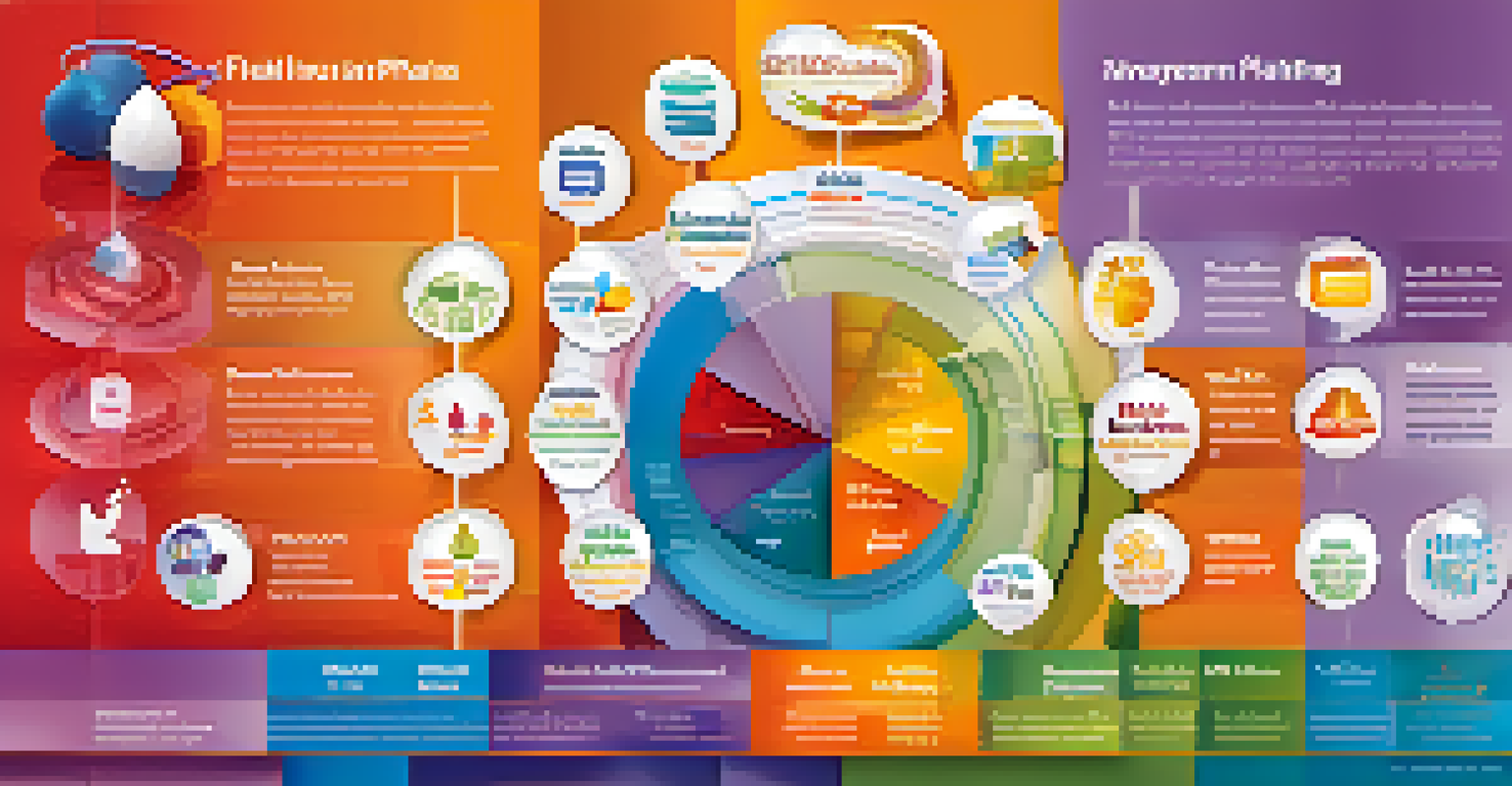Flexible Benefits: Tailoring Packages to Employee Needs

Understanding Flexible Benefits and Their Importance
Flexible benefits, often known as 'cafeteria plans', allow employees to choose the perks that suit their unique needs. This approach caters to diverse lifestyles, whether someone is a new parent, a young professional, or nearing retirement. By offering a variety of options, companies can foster a sense of ownership and satisfaction among their workforce.
Employees who are engaged and feel empowered can be the difference between a company that thrives and one that merely survives.
In today’s competitive job market, employees are looking for more than just a salary; they want benefits that resonate with their personal values and life circumstances. Flexible benefits can make a significant difference in attracting and retaining top talent. This customization not only enhances job satisfaction but also creates a more committed and engaged workforce.
Moreover, providing tailored benefits can lead to improved overall employee well-being. When employees feel their needs are understood and met, they are more likely to be productive and loyal. This can ultimately translate into a more positive company culture and better business outcomes.
Types of Flexible Benefits to Consider
There are several types of flexible benefits that companies can offer, including health insurance, retirement plans, and wellness programs. Employees can select options that align with their current life stage, such as family coverage for new parents or gym memberships for fitness enthusiasts. This variety ensures that everyone finds something beneficial to their situation.

Additionally, other options may include paid time off, childcare assistance, and even educational reimbursements. By offering a broad spectrum of choices, employers can cater to different preferences and lifestyles. This flexibility empowers employees to make decisions that best suit their personal and professional goals.
Flexible Benefits Enhance Employee Satisfaction
Offering customizable benefits allows employees to choose options that align with their personal and professional needs, leading to higher job satisfaction.
Ultimately, the goal is to create a benefits package that is as diverse as the workforce itself. By understanding and addressing the unique needs of employees, companies can build a culture of support that drives satisfaction and retention.
Benefits of Implementing Flexible Packages
One of the main advantages of flexible benefits is that they can lead to higher employee engagement. When employees have a say in their benefits, they feel valued and respected. This can create a more positive work environment where individuals are motivated to contribute their best efforts.
Every employee should feel that their contributions are valued and important. Customizing benefits is a great way to show that you understand and care about their individual needs.
Moreover, flexible benefits can significantly enhance job satisfaction. Employees who can choose their perks often report feeling happier and more fulfilled at work. This satisfaction can reduce turnover rates and save companies the costs associated with hiring and training new staff.
Additionally, flexible benefits can help employers stand out in the job market. Companies that offer robust and customizable benefits packages are often viewed more favorably by potential candidates. This competitive edge can be crucial for attracting top talent in a crowded field.
Challenges of Implementing Flexible Benefits
While there are many advantages to flexible benefits, there are also challenges to consider. One major hurdle is the administrative complexity involved in managing a diverse benefits package. Employers need to ensure they have the right systems in place to handle various options and employee choices effectively.
Furthermore, communication plays a critical role in the success of these programs. Employees must understand the available options and how to make the best choices for their needs. Without clear and concise communication, employees may feel overwhelmed or confused about their benefits.
Challenges in Managing Benefits Programs
Despite their advantages, flexible benefits can create administrative complexities and require effective communication to ensure all employees understand their options.
Lastly, there is the risk of unequal utilization of benefits. Some employees may take full advantage of the offerings, while others may not engage at all. Organizations need to monitor usage and gather feedback to ensure that all employees feel included and benefit from the programs.
How to Design a Flexible Benefits Package
Designing a flexible benefits package starts with understanding the needs of your workforce. Conducting surveys or focus groups can provide valuable insights into what employees truly value. This feedback is essential for creating a benefits package that resonates with different demographics within the company.
Next, it’s important to work with benefits providers to create a diverse array of options. A well-rounded package might include healthcare, retirement savings, and wellness incentives, tailored to the specific needs identified. Collaboration with industry experts can help ensure that the options are both attractive and financially viable.
Finally, regular reviews and adjustments are key to maintaining the effectiveness of flexible benefits. As employee needs and market conditions change, so should the offerings. Keeping the lines of communication open and soliciting feedback will help the company adapt its benefits package to remain relevant and appealing.
Communicating Flexible Benefits to Employees
Effective communication is crucial for the success of any benefits program. Employers should provide clear, easy-to-understand information about available options and how to enroll. Using multiple channels, such as emails, webinars, and in-person meetings, can help reach employees where they are most comfortable.
Additionally, creating a user-friendly benefits portal can enhance the experience. Employees should have access to all the information they need at their fingertips, allowing them to explore options and make informed decisions. This digital approach can simplify the enrollment process and keep employees engaged.
Future Trends in Flexible Benefits
The evolution of flexible benefits will likely include more personalized options and technology-driven solutions to better meet the diverse needs of employees.
Finally, it’s beneficial to encourage ongoing conversations about benefits. Regular check-ins or feedback sessions can help ensure that employees feel supported and understand the value of their choices. This proactive approach fosters a culture of transparency and trust.
The Future of Flexible Benefits in the Workplace
As the workplace continues to evolve, so too will flexible benefits. Companies are increasingly recognizing the importance of catering to the diverse needs of their employees. Future trends may include even more personalized options, such as mental health support and financial wellness programs.
Moreover, advancements in technology will likely play a significant role in shaping these benefits. Innovations such as AI and data analytics can help employers tailor their offerings based on real-time feedback and usage patterns. This data-driven approach will allow for more effective and targeted benefits packages.

Ultimately, the future of flexible benefits looks promising. As organizations continue to prioritize employee well-being and satisfaction, flexible benefits will become a cornerstone of a supportive and adaptive workplace culture.